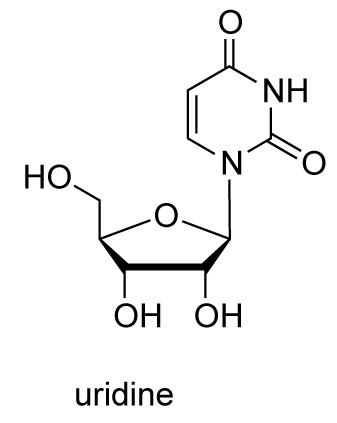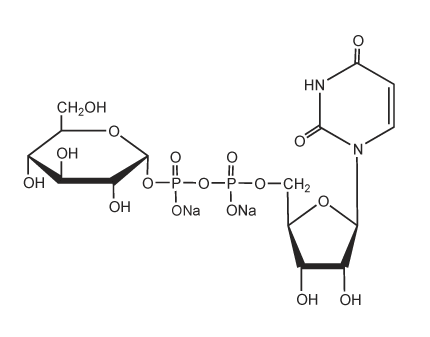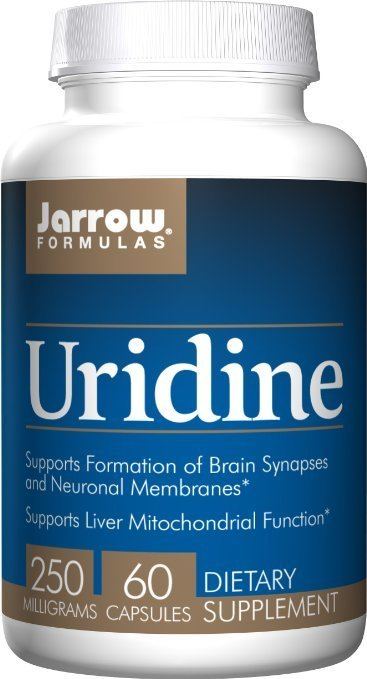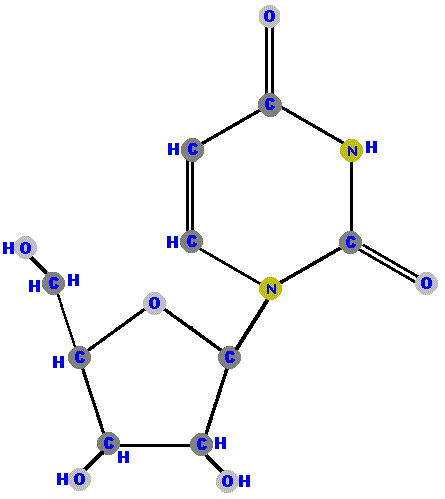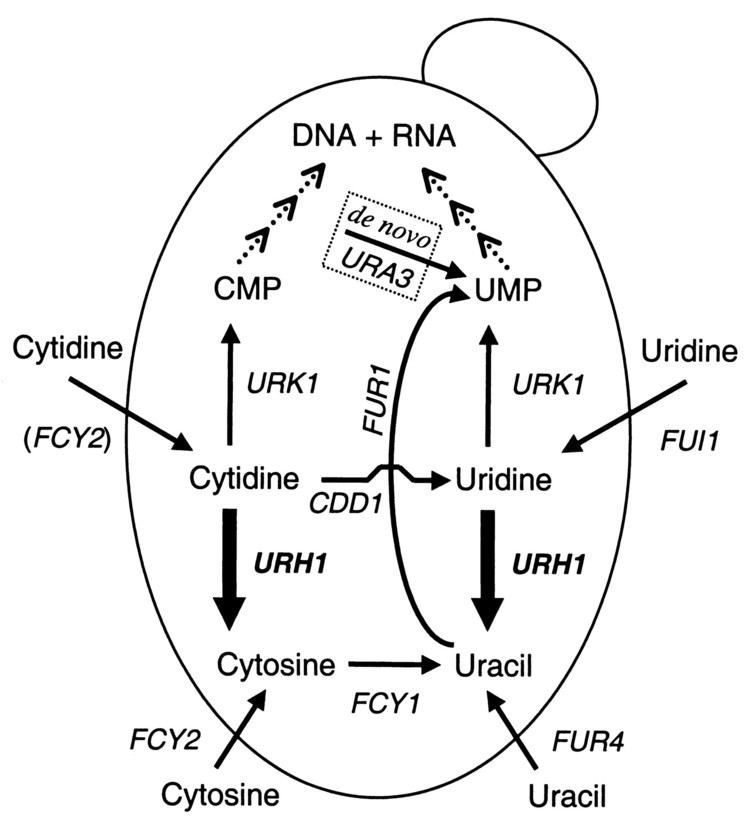Formula C9H12N2O6 Density 99,310 g/cm³ | Molar mass 244.2014 g/mol Appearance solid | |
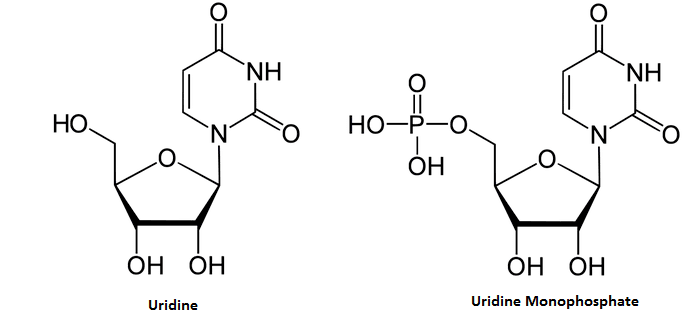 | ||
Uridine is a glycosylated pyrimidine-analog containing uracil attached to a ribose ring (or more specifically, a ribofuranose) via a β-N1-glycosidic bond.
Contents
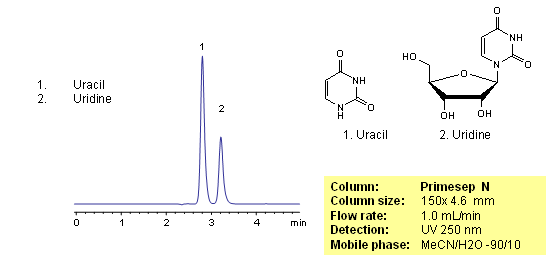
It is one of the five standard nucleosides which make up nucleic acids, the others being adenosine, thymidine, cytidine and guanosine. The five nucleosides are commonly abbreviated to their one-letter codes U, A, T, C and G respectively. However, thymidine is more commonly written as 'dT' ('d' represents 'deoxy') as it contains a 2'-deoxyribofuranose moiety rather than the ribofuranose ring found in uridine. This is because thymidine is found in deoxyribonucleic acid (DNA) and not ribonucleic acid (RNA). Conversely, uridine is found in RNA and not DNA. The remaining three nucleosides may be found in both RNA and DNA. In RNA, they would be represented as A, C and G whereas in DNA they would be represented as dA, dC and dG.

Nootropic review mr happys stack uridine fish oil choline
In the glycolysis pathway

Uridine plays a role in the glycolysis pathway of galactose. There is no catabolic process to metabolize galactose. Therefore, galactose is converted to glucose and metabolized in the common glucose pathway. Once the incoming galactose has been converted into galactose 1-phosphate (Gal-1-P), it is involved in a reaction with UDP-glucose, a glucose molecule bonded to uridine diphosphate (UDP). This process is catalyzed by the enzyme galactose-1-phosphate uridyl transferase and transfers the UDP to the galactose molecule. The end result is UDP-galactose and glucose-1-phosphate. This process is continued to allow the proper glycolysis of galactose.
